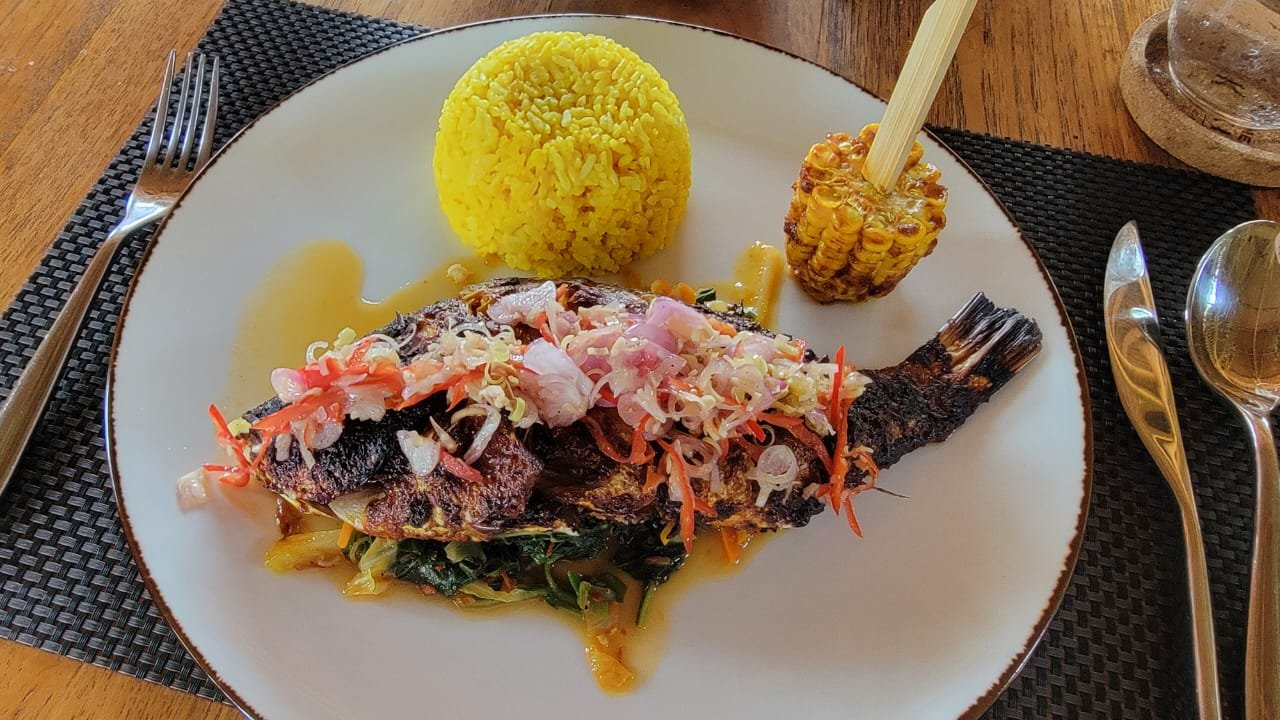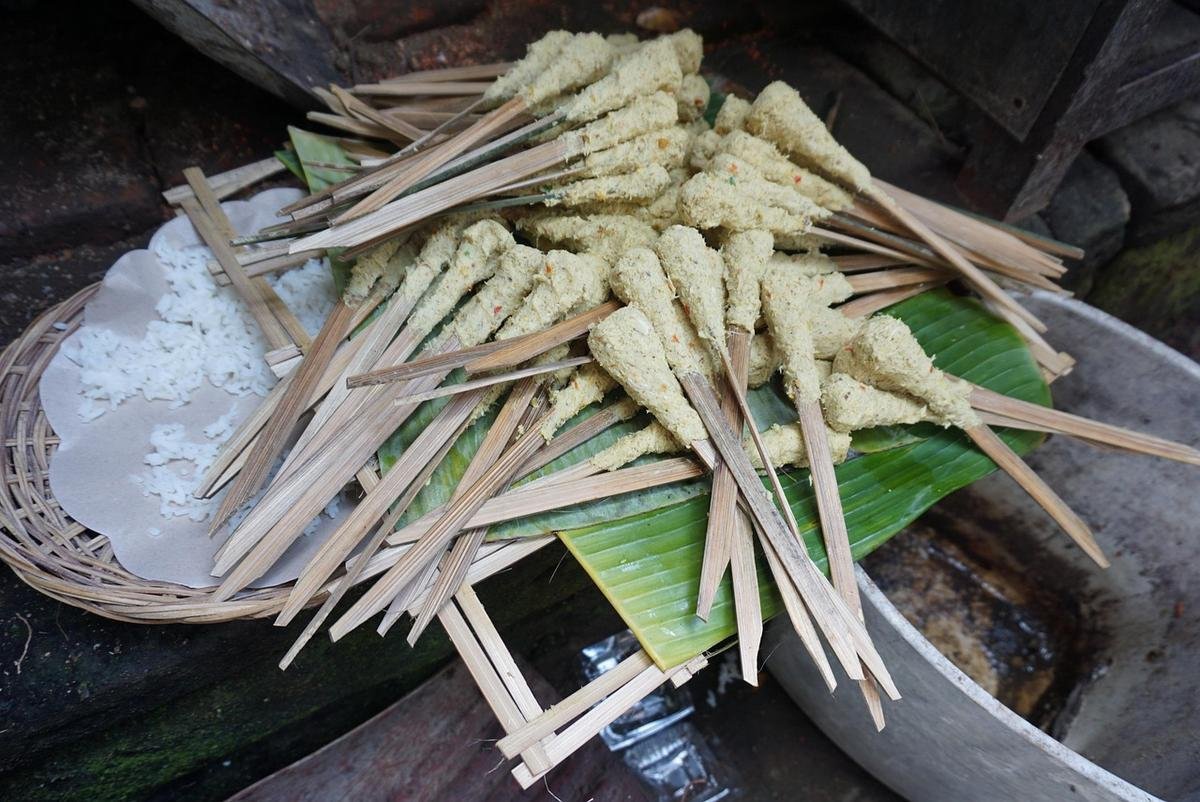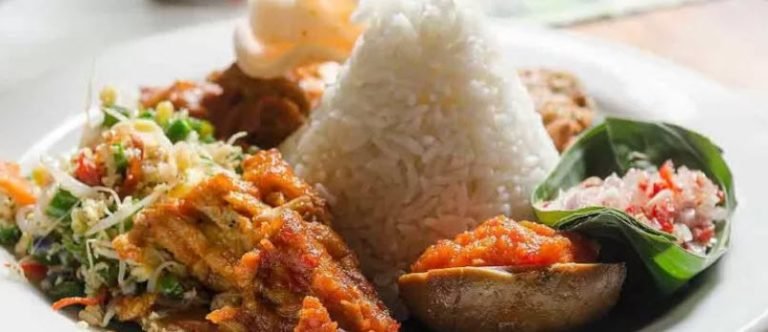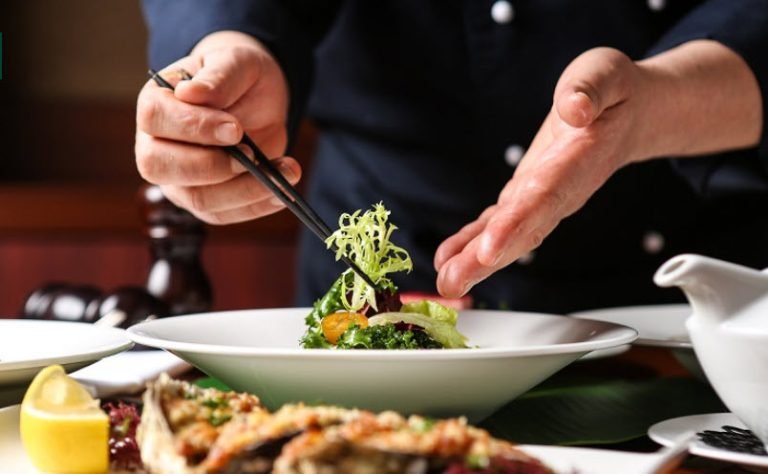Bali’s Skipjack Tuna Satay Delivers a Spicy, Sweet, Tangy Flavor Explosion
Bali attracts visitors with scenic coastlines and lush rice terraces. The island offers a range of regional dishes that highlight local traditions. Among them, sate languan stands apart. It consists of skipjack tuna formed into skewers. This satay variant departs from the usual goat or chicken offerings. Diners encounter a taste profile shaped by Balinese spice blends and cooking techniques.
Skewered fish begins with choice cuts of fresh skipjack tuna. Artisans grind the tuna before adding paste made from dried shrimp, red chilies, shallot slices, garlic cloves, palm sugar and lime juice. Those elements combine into a base that blends heat, sweetness and a hint of acidity. Each mouthful carries that balanced interplay. The mixture darkens to a reddish hue before it moves on to the next phase.

Before skewering, cooks let the fish and spice blend rest for up to two hours. This period of marination happens in bowls carved from bamboo or covered by banana leaf sheets. The resting stage allows flavors to permeate the tuna particles. Skilled chefs watch the mix for consistency changes. A well-marbled paste appears slightly glossier when ready for the grill.
Strips of the fish-spice mix find their place on skewers carved from flat sections of coconut frond stalks. Those wooden strips have enough width for a firm hold of the pureed tuna. Grill masters line them up over glowing charcoal embers. A light charring forms on the exterior while internal fibers remain moist. The faint smoke aroma accentuates the savory fish combination without overwhelming the natural flavors.
Presentation calls for a bed of steaming white rice that rests under the grilled satay. Platters often feature small sides such as steamed fish parcels wrapped in banana leaf, long bean salad and fried peanuts. A raw condiment made by chopping shallots, fresh chilies and lemongrass then tossing them in coconut oil provides a crunchy, pungent kick. That sharp seasoning slices through the richness of the fish skewers.

Coastal fishermen haul skipjack tuna from surrounding seas each morning. Local kitchens transform those catches by using spices grown in the island’s volcanic soil. This direct link between sea and land gives sate languan its signature identity. It serves as more than a dish; it represents generational knowledge of how to turn simple ingredients into a feast.
Generations have preserved this method of crafting fish satay. Early records and oral histories trace sate languan back to small villages where communal meals centered on the day’s fresh catch. Local families passed down secret ratios of seasoning to maintain consistent taste. Grill timing remains a guarded detail among experienced cooks. These traditions continue in neighborhood eateries and private kitchens alike.
Beyond flavor alone, sate languan carries significance for its makers and diners. It stands as a reminder of life close to the shoreline and respect for natural resources. Each skewer tastes like more than protein dressed in spice. It carries meaning about community, survival skills and the balance between people and their environment.
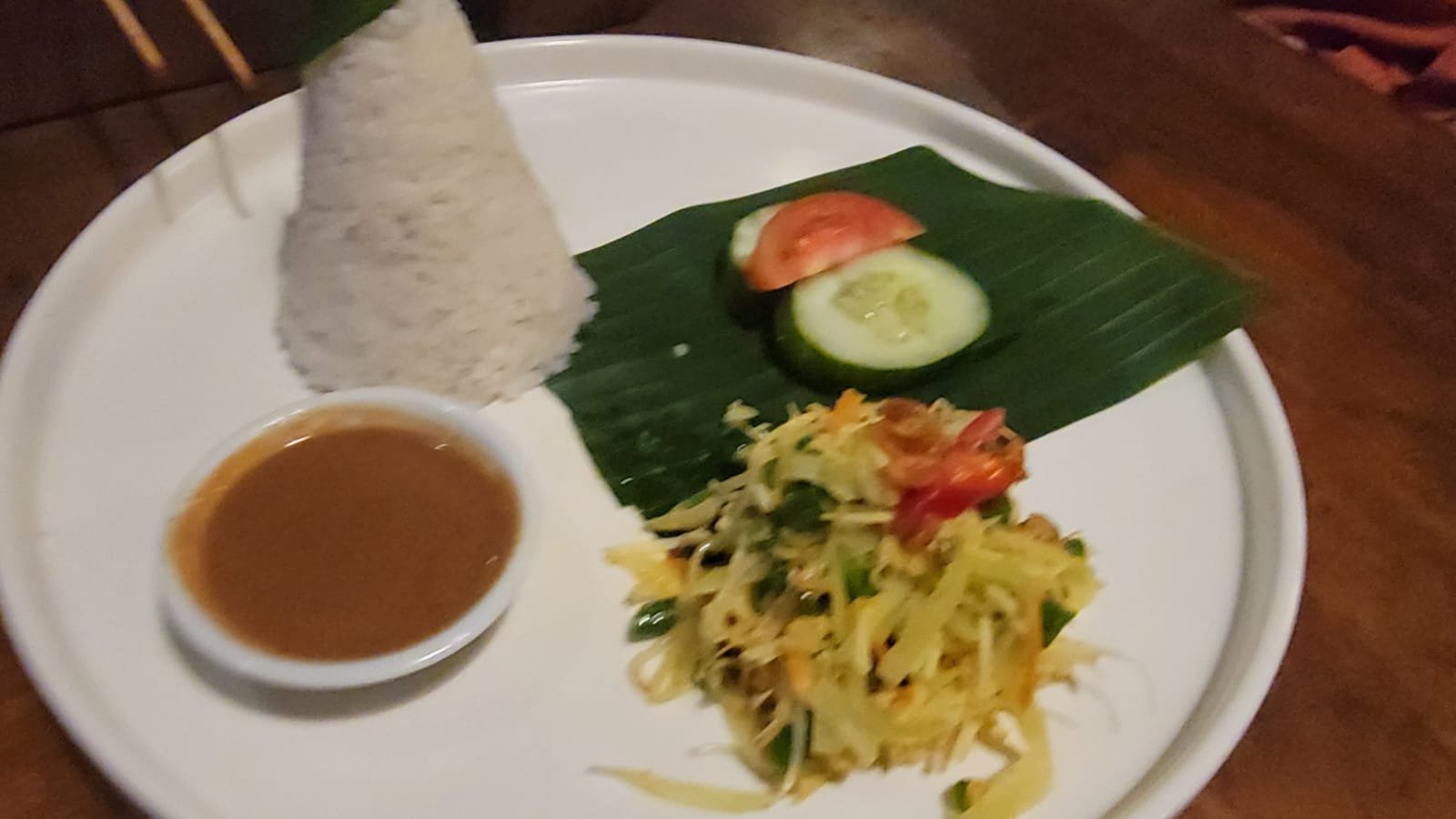
Tourists who sample sate languan often recall its layers of taste long after they leave. Eating that special satay offers visitors a way to connect with local culture through something beyond sightseeing. It ranks among Bali’s signature offerings and finds its way onto menus at both street stalls and upscale restaurants. Each establishment adapts the recipe slightly while honoring core elements.
Varied settings bring out different facets of this age-old specialty. Beachside vendors serve sate languan alongside cold coconut water for a light meal at sunset. Fine dining spots plate the skewers with microgreens, edible flowers and dipping sauces that reflect culinary innovation. No matter the venue, skipjack tuna in its spiced form remains the heart of the experience.
Local festivals often showcase sate languan at communal feasts. During temple celebrations, families prepare large batches for neighbors and guests. Offering plates arrive on woven trays decorated with banana leaf and marigold petals. That scene highlights how food plays a central role in Balinese social gatherings.
